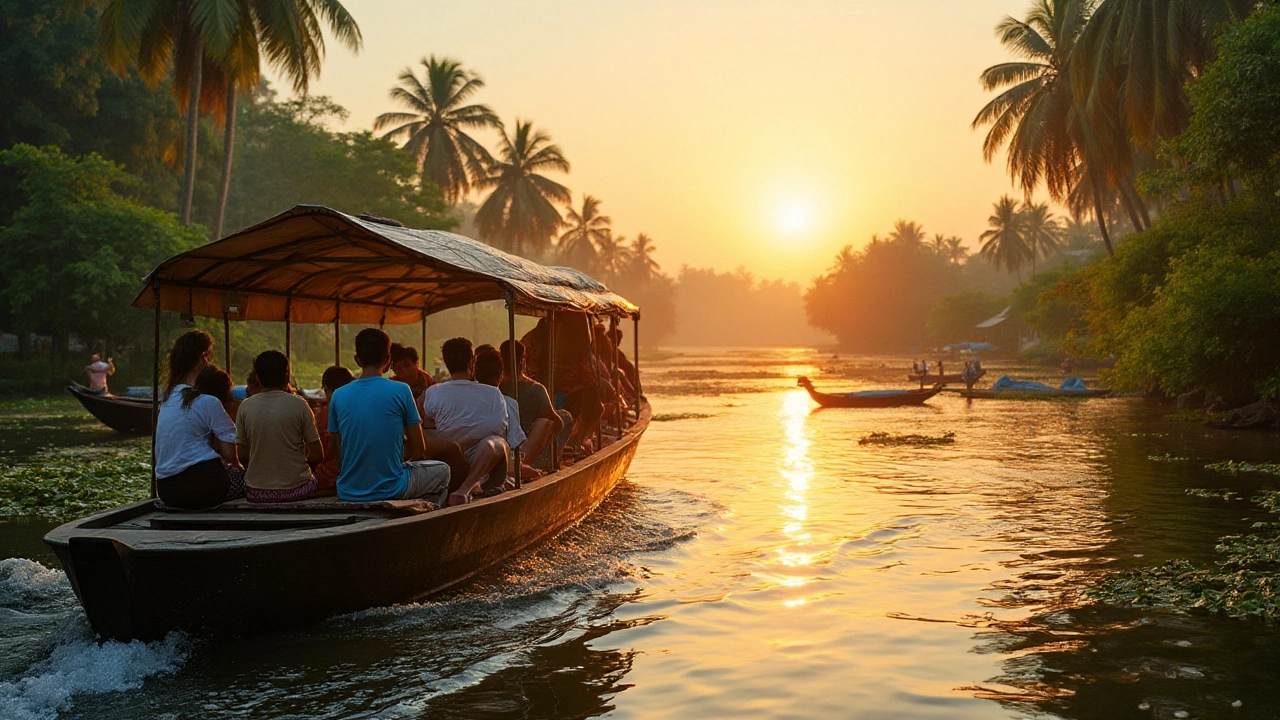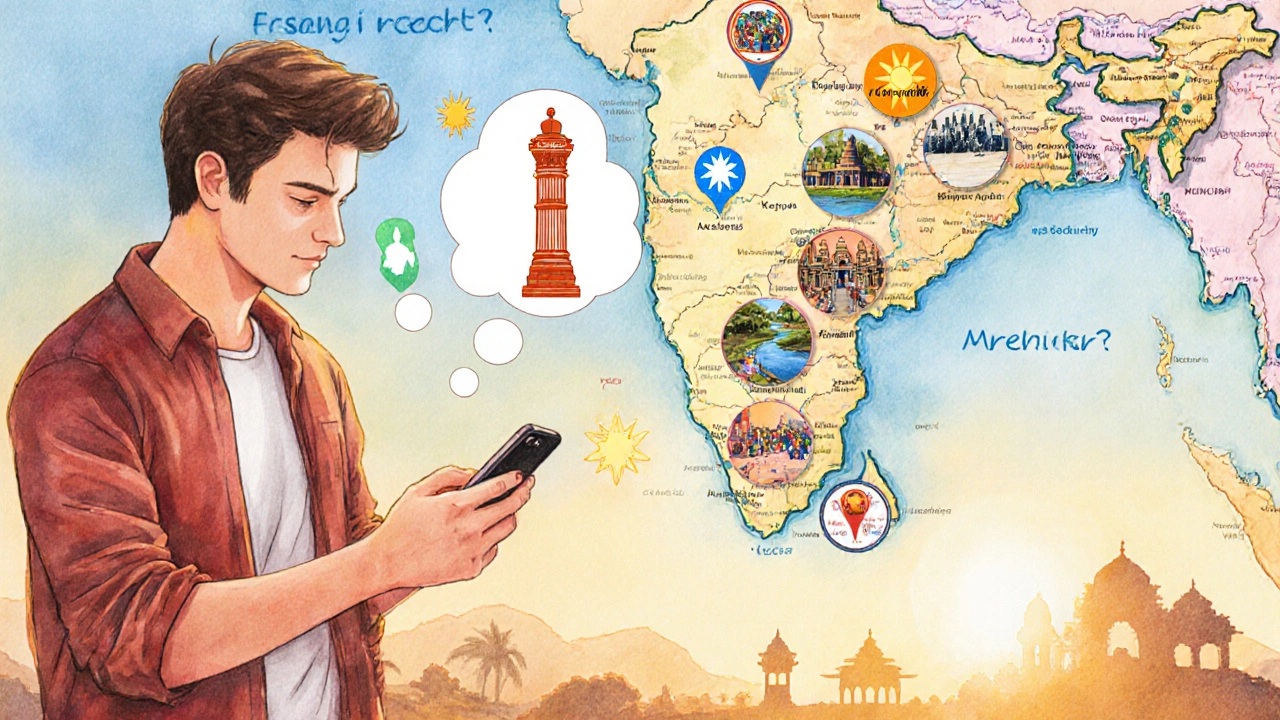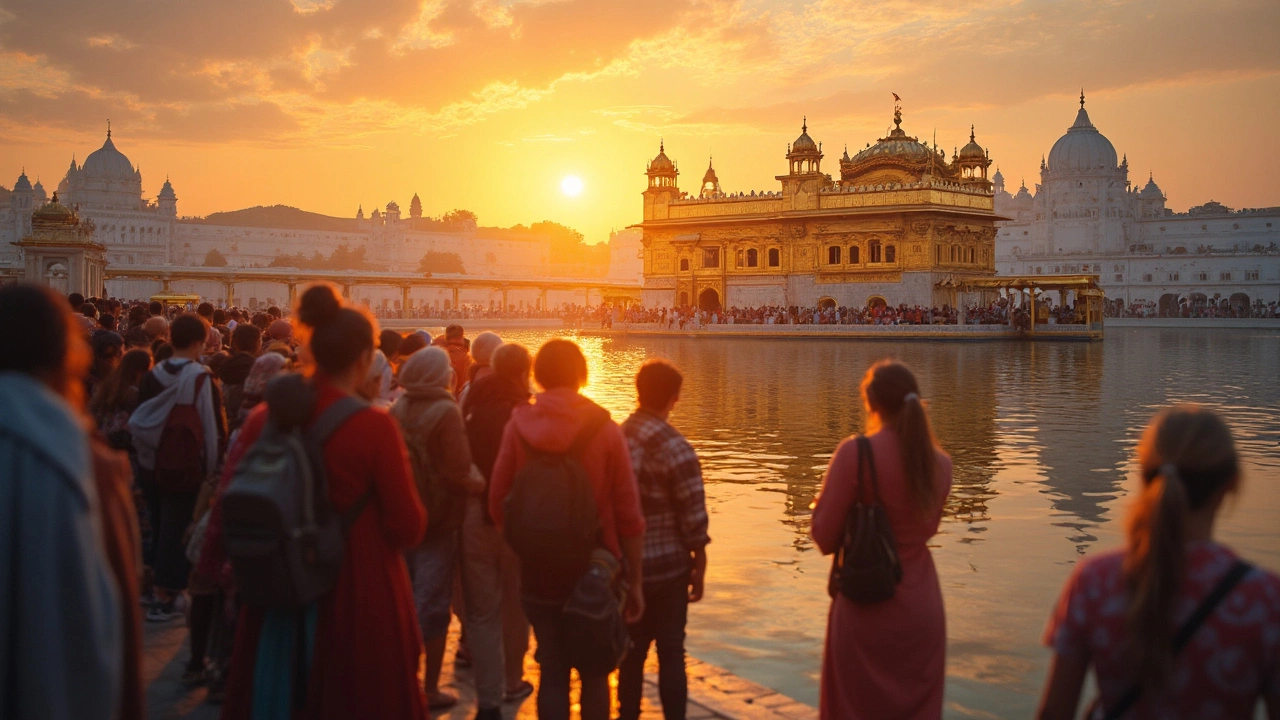Preventing Traveler's Diarrhea in South India: Essential Tips
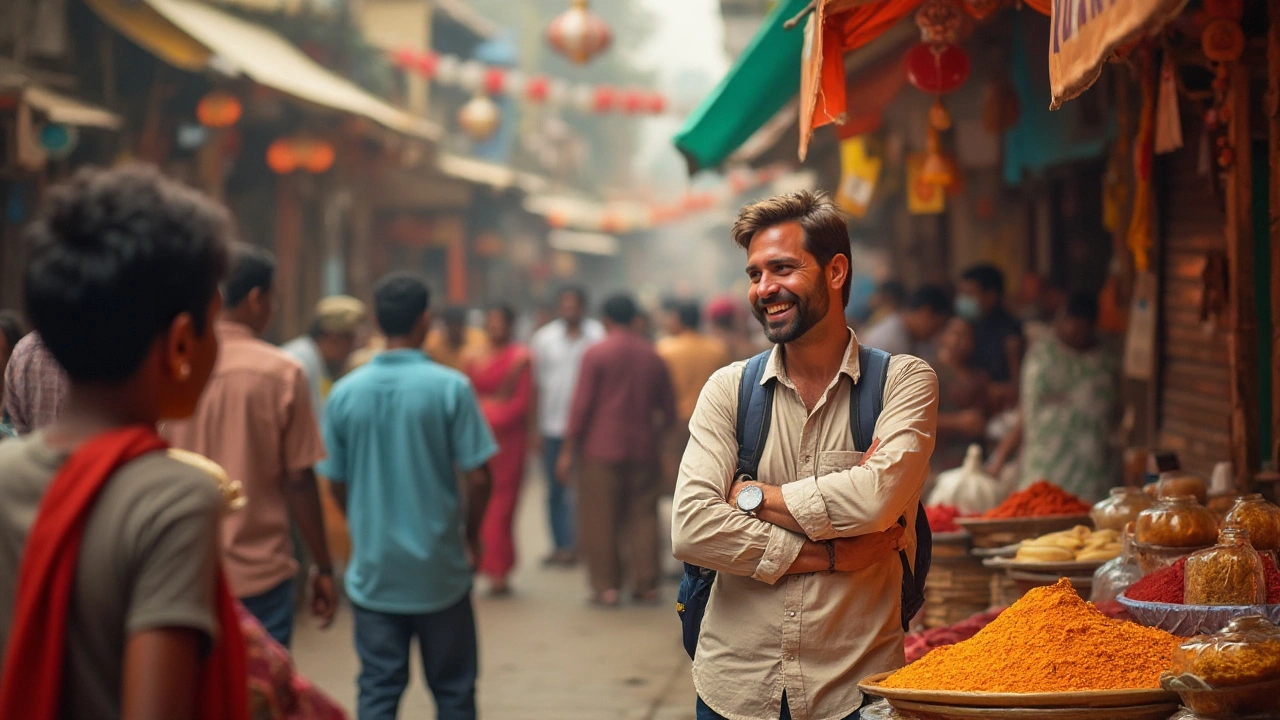
Traveling to South India is a remarkable experience, brimming with rich cultures, stunning landscapes, and tantalizing cuisine. Yet, amidst all the adventure, there lurks an unwelcome guest that many travelers have to contend with: traveler's diarrhea. A few precautions can go a long way in keeping this common ailment at bay, allowing you to fully enjoy your journey.
Understanding the root causes and how to avoid them can equip you with the knowledge to stay healthy. Whether it's being cautious about the local water or making smart food choices, each step brings you closer to a safe and enjoyable trip. By being prepared, you'll ensure that South India's wonders remain the highlight of your travels, not uninvited bathroom breaks.
- Understanding Traveler's Diarrhea
- Safe Drinking Water Practices
- Choosing the Right Foods
- Pre-Travel Preparations
- On-the-Go Hygiene Tips
- What to Do if You Get Sick
Understanding Traveler's Diarrhea
Traveler's diarrhea is one of the most common maladies experienced by visitors venturing into new environments, especially when visiting countries like India where the climate, cuisine, and microbiome differ significantly from those at home. This illness, characterized by an increase in frequency and a change in consistency of stools, can be caused by a variety of pathogens ranging from bacteria such as Escherichia coli to viruses and protozoa. The onset of symptoms typically occurs within 2 to 4 days of exposure, leading to several days of discomfort. Recognizing the signs early is crucial, and understanding what incites these bouts can prevent travelers from enduring the worst of it.
The primary cause of traveler's diarrhea is the consumption of contaminated food or water. In South India, where water quality can fluctuate between regions, it's paramount to pay close attention to what you ingest. Most areas in South India still rely heavily on untreated water sources. This variation in water treatment standards means that even locals sometimes face issues, although they often have built up a tolerance to local flora and fauna over time. While many travelers assume that spicy food contributes to the condition, it’s not usually the case. The spices used in South Indian cuisine can actually have antimicrobial properties that reduce the likelihood of bacterial growth. Yet, unfamiliar foods can still irritate the gastrointestinal tract, potentially complicating matters on their own.
According to the Centers for Disease Control and Prevention, approximately 30% to 70% of travelers will suffer from traveler's diarrhea during a two-week stay in a developing country. It’s an ailment that affects a vast number of people each year, yet it’s highly avoidable with appropriate precautions. These drastic discrepancies in incidence highlight the critical nature of understanding the local infrastructure concerning food and water. Prevention is often simpler and less distressing than treatment, and it yields better travel experiences. From personal surveys conducted with fellow travelers over the years, I've found that those who adhere to simple health guidelines tend to enjoy their trips significantly more.
"In truth, the real key to enjoying foreign travel is not just about exploration but taking small steps to ensure personal health," advises Dr. Amit Sharma, a prominent figure in tropical medicine. "Understanding and respect for local customs, including food preparation standards, can be a protective measure for anyone venturing into unfamiliar regions."
In terms of numbers, it’s worth noting that despite modernization, drinking water access in India varies tremendously, as reflected in a study by the National Sample Survey Office. It found that nearly 89.3% of urban homes have access to improved drinking water sources, but only 71.7% of rural homes do. It's factors like these that highlight the necessity of knowing how to avoid contaminated water and food while interacting with such diverse conditions. Education and awareness can be your best ally in unfamiliar settings. Being informed establishes a healthy travel routine and helps build a foundation of safety that guards against unpleasant surprises in your South Indian journey.
Safe Drinking Water Practices
When venturing through the captivating region of South India, one of the most crucial considerations for travelers is ensuring access to safe drinking water. The region’s water sources can be unfamiliar to visitors, posing a risk of traveler's diarrhea. To steer clear of potential health issues, it’s essential to understand the dynamics of local water and adopt smart practices. South India travel can be a unique experience, filled with vibrant streets and exotic sites, but being cautious about water consumption shouldn’t be taken lightly.
Several methods can safeguard your drinking habits. First and foremost, always opt for bottled water, which is widely available in shops across the region. It’s advisable to check the seal before purchasing to ensure tamper resistance. Using a trusted water purification method, like a UV sterilizer or a portable filter, can provide added protection, especially if you find yourself in remote areas.
Another tip is to be wary of ice in drinks, as it’s often made from untreated tap water. It can be tempting to have a chilled drink to beat the South Indian heat but avoiding ice is a wise choice. Additionally, boiling water is a traditional yet effective method. Bringing water to a rolling boil for at least a minute is sufficient to kill most pathogens. In rural settings, locals may use this age-old practice, and joining them is an easy way to enjoy safe water.
Restaurants and eateries can be unpredictable when it comes to quality, so it’s prudent to ask whether they use purified water for cooking and drinking. Trust your instincts; if unsure, it’s okay to avoid a place and find somewhere you feel comfortable. Consider carrying a reusable water bottle with a built-in filter—an environmentally friendly option that keeps you safe throughout your India travel adventure.
According to the World Health Organization, "ensuring access to safe drinking water is a global imperative and fundamental to maintaining public health." This highlights the importance of taking preventive measures during your travels.
| Method | Effectiveness |
|---|---|
| Bottled water | Highly effective if properly sealed |
| Boiling | Very effective against pathogens |
| Portable filters | Effective for most impurities |
| UV sterilization | Effective against bacteria and viruses |
| Avoiding ice | Prevents intake of untreated water |
Remember, taking precautions with drinking water isn’t about creating barriers with the stunning landscapes of South India; rather, it’s about enriching your experience with a focus on wellness. By understanding and practicing safe drinking water tips, you open doors to a seamless and healthy exploration of what this magical land has to offer.
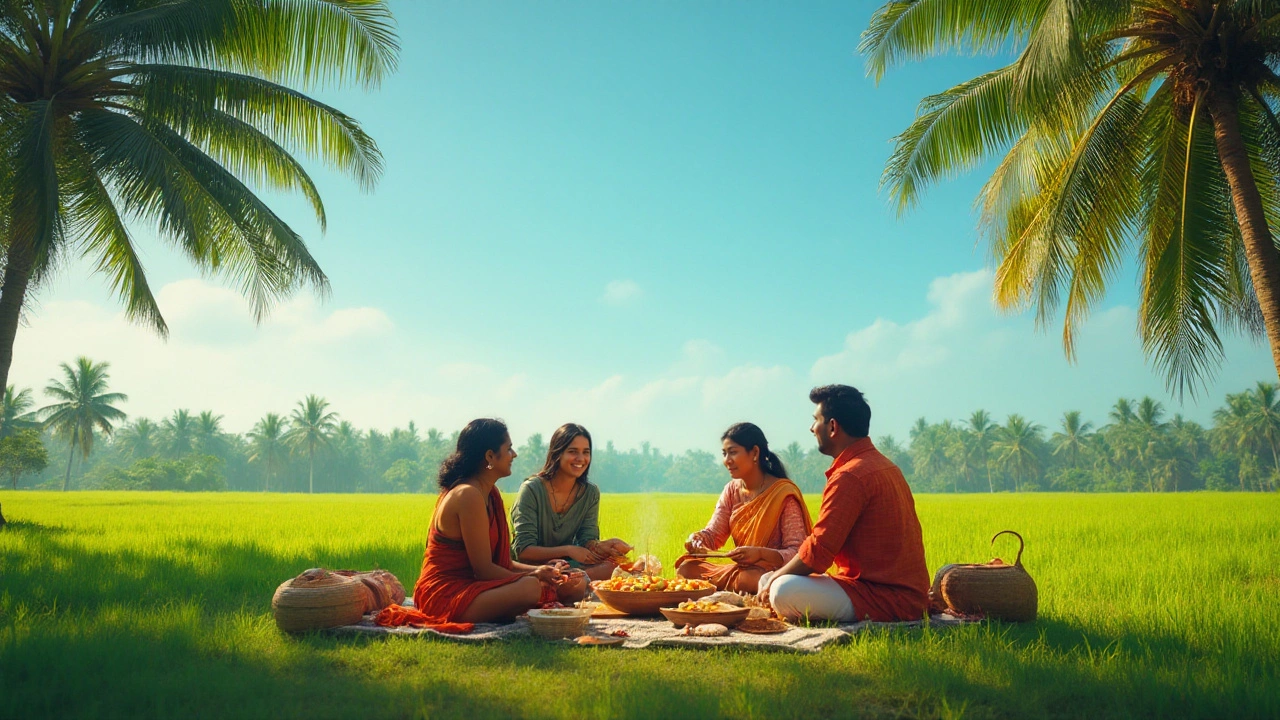
Choosing the Right Foods
When journeying through South India, one is bound to be captivated by its aromatic food scene. Yet, for the enthusiastic traveler, making the correct dietary choices is pivotal. While South India's street food is tempting with its visual appeal and mouth-watering aromas, it's crucial to exercise caution. Foods served at street stalls often have sambars and chutneys sitting out for extended periods, which could become breeding grounds for bacteria. Opting for freshly cooked meals significantly reduces the risk of contracting traveler's diarrhea. Prioritize restaurants that are bustling with locals, as quick food turnover ensures freshness. Cooked foods such as dosa or idli are generally safer compared to raw salads or fresh-cut fruits, which may be washed with contaminated water.
Traditional South Indian curries are a treasure trove for those ready to explore their vibrant taste palette. Dishes like the Kerala-style fish curry or the classic Chettinad chicken are primarily made with safe cooking practices. However, to be doubly sure, ensure the meat or seafood is thoroughly cooked. Vegetarian dishes offer an equally enticing and safer alternative. Lentils, beans, and rice form the staple diet here and are cooked at high temperatures, which act as deterrents to bacteria. While sampling these delicacies, always inquire about the spices and ingredients used, ensuring there are no allergy triggers.
"Do not eat uncooked food such as salads or fruits that you have not peeled or washed yourself," advises the CDC when discussing food safety for travelers. This simple rule can help avoid unwanted health problems while enjoying foreign cuisines.
Staying cautious doesn't mean missing out on street food experiences. For the die-hard street food lovers, choose stalls where food is being prepared right in front of you. Popular South Indian snacks like vada pav and pani puri should be consumed where you see the preparations. Observing cleanliness standards and the freshness of ingredients can serve as a safety net. Street vendors who wear gloves and maintain tidy stations typically offer safer options.
Moreover, being selective about beverages can be just as important. Always favor hot beverages such as tea or coffee over cold drinks. Coconut water from its husk is another refreshing and hygienic choice, as the process inherently minimizes contamination risks. Bottled water remains the safest choice for drinking water, and it's prudent to verify the seal before purchase. Steer clear from ice in drinks unless you're confident of the purity of water used, as that could be a potential hazard contributing to traveler's diarrhea.
Apart from these strategies, cultivating an adventurous yet calculated approach to your culinary escapade in South India can yield delightful and safe experiences. Balancing curiosity with precaution enables you to immerse yourself in the incredible flavors of the region while ensuring that your travel memories remain untarnished by unforeseen health woes.
Pre-Travel Preparations
Embarking on a journey to South India requires more than just packing your bags and booking flights. To ensure a smooth trip, especially if you want to avoid traveler’s diarrhea, certain pre-travel planning is essential. It's wise to begin by scheduling a visit to a travel clinic or your healthcare provider. They are your best source of advice on vaccinations that can protect you against a range of diseases prevalent in the region, some of which might not be in your home country. Hepatitis A, for instance, is one that you might want to consider getting, as it can be transmitted through contaminated food and water, a common cause of traveler's diarrhea. A well-informed healthcare provider will also discuss your options for prophylactic medications that may help to prevent illness.
It's also beneficial to acquaint yourself with ways to purify water. The quality of tap water in different parts of South India can vary, and, at times, it might not be suitable for direct consumption. While bottled water is widely available, it isn’t always the most environmentally friendly option. Consider investing in a portable water filter or purification tablets to ensure that you're not contributing to plastic waste while staying healthy. Brands like LifeStraw or SteriPEN offer excellent options that are both effective and easy to use, ensuring that every sip you take is safe.
Don't underestimate the power of being prepared with supplies. Including oral rehydration salts, a first-aid kit, and any prescribed medications in your luggage can be lifesavers. Many travelers also pack probiotics, as some research suggests that they can bolster your digestive system against foreign bacteria. You might also consider packing familiar snacks from home, just in case you find yourself in a situation where the local offerings aren't suitable or safe for consumption.
Dr. William Bradley from the Travelers' Health Institute states, "Proper preparation is the cornerstone of a successful trip to destinations like South India where food and water safety differ from what tourists might be accustomed to in their home country."
Finally, do your research on the places you plan to visit. Knowing about local dietary customs, popular dishes, and even street food staples can help you recognize what to try and what might be risky. Travel blogs, forums like TripAdvisor, and travel guides provide firsthand experiences from other travelers who have been in your shoes. Often, these resources offer invaluable tips specific to South India and can point you toward restaurants and eateries with high hygiene standards, reducing the risk of encountering unsafe meals. By preparing ahead of time, you can avoid unexpected challenges and enjoy the myriad experiences that South India offers without any health concerns pulling you back.
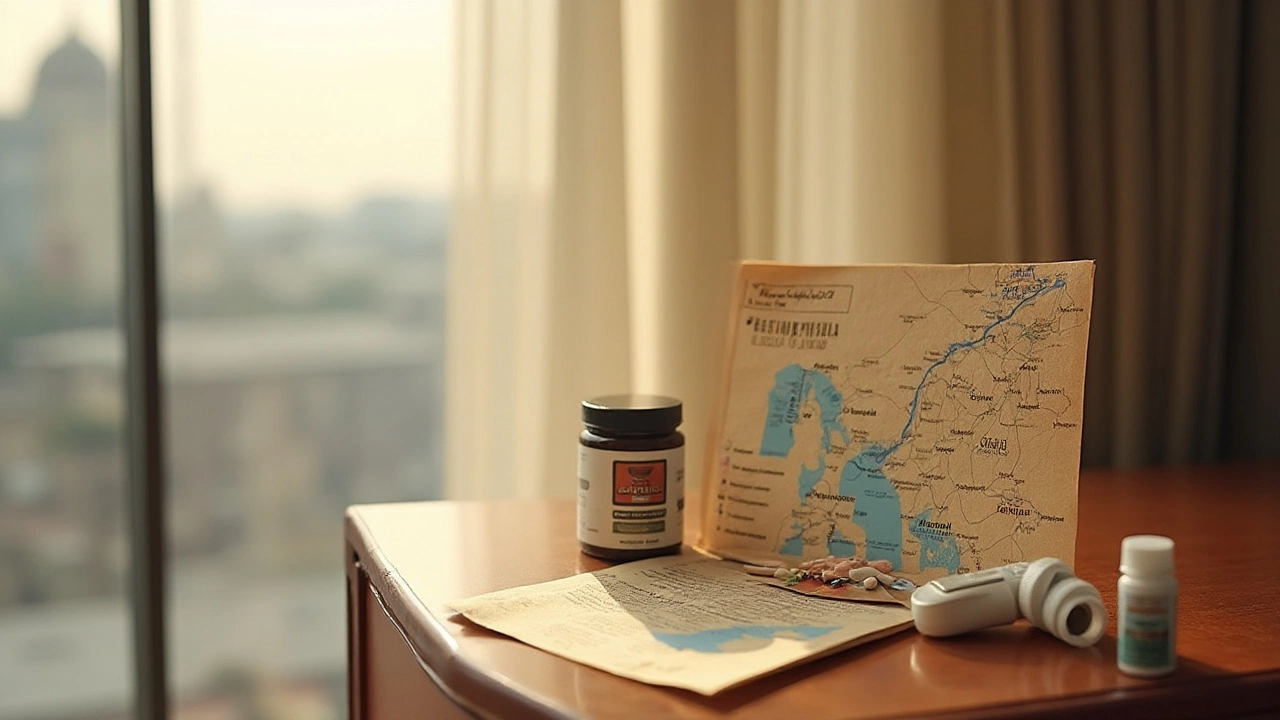
On-the-Go Hygiene Tips
When exploring the captivating landscapes and cultural treasures of South India, maintaining proper hygiene is paramount for keeping traveler's diarrhea at bay. One of the most critical habits to adopt is frequent hand washing. Though it seems simple, washing your hands with soap and clean water before meals and after using the restroom significantly reduces the risk of ingesting harmful bacteria. Where handwashing facilities are lacking, hand sanitizers become indispensable. They’re compact, easy to carry, and effective, making them a traveler’s best friend.
Ensuring access to safe drinking water is equally crucial. It's wise to travel with a reusable water bottle that has an inbuilt water filter. This not only helps in reducing the consumption of single-use plastic but also offers peace of mind knowing the water you drink is clean. Be mindful of accepting beverages with ice from street vendors or restaurants, as the source of the water used to make the ice could be questionable. "The best travel tip I ever received was to always opt for freshly prepared beverages," says experienced traveler and author, Michael Palin.
"Nothing beats the safety of freshly boiled tea in India," he notes.With such advice, you're reminded to be diligent wherever liquids are involved.
For those who enjoy sampling street food, it’s imperative to select vendors with a high turnover of patrons as they often equate to fresh goods. However, it's still wise to heed the caution of sticking to dry food over saucier dishes, which are more susceptible to contamination. Your reusable utensils come in handy here. Many travelers carry their own fork, knife, and spoon set to ensure what touches their food is completely hygienic. Additionally, avoid touching your face, especially around your mouth, as this is one of the fastest routes for bacteria to enter your body.
An often-overlooked aspect of travel hygiene involves also tending to personal space, like cleaning digital devices. Given our constant interaction with phones and cameras, regularly wiping them with antibacterial wipes keeps them germ-free. This way, you’re not unwittingly transferring pathogens from surface to skin. Beyond that, be wary of money, another frequent conduit for germs. Consider carrying a small bottle of hand sanitizer specifically for use after handling currency, which can stoically survive innumerable hands.
Lastly, staying composed and mindful about these hygiene practices need not ruin the excitement of the trip. Before moving on, take a moment to reflect on the importance of these habits. They ensure you have all the energy and enthusiasm to capture the essence of South India's allure without the unwelcome interruption of illness. These methods become second nature over time, integrating seamlessly into your travel routine. By emphasizing health tips, you prioritize your well-being, turning these habits into enriching travel experiences.
What to Do if You Get Sick
Even with meticulous care, sometimes traveler’s diarrhea can catch up with you on your South India adventure. It’s crucial to address the situation swiftly to prevent it from dampening your trip. First and foremost, hydration is key. Dehydration is the primary concern associated with diarrhea, especially in the hot, humid climate of South India. Make an effort to drink oral rehydration solutions or electrolyte-rich drinks. They're designed to quickly replenish essential fluids and salts lost. It's advisable to pack these solutions before your journey as a preventive measure.
Alongside hydration, consider consuming bland foods such as bananas, rice, applesauce, and toast – known famously by its acronym, the BRAT diet. These foods are gentle on your stomach and can help firm up stools. Rest is another critical component of recovery. Sometimes, the body simply needs time to heal and bounce back. Allow yourself downtime and avoid strenuous activities until you feel better. If symptoms persist beyond 48 hours or are accompanied by severe cramps, fever, or blood in stools, seek medical assistance. South India has competent medical facilities, particularly in urban areas.
In some cases, particularly when diarrhea is severe or accompanied by other symptoms, anti-diarrheal medications might be necessary. It's a good idea to bring them from home, as they are often prescribed after consultation with your healthcare provider. In an enlightening quote from the CDC, they remind travelers that "prevention and proper self-care can thwart most minor health issues on the road, keeping your adventure uninterrupted." Always consult with a healthcare professional if you are considering taking any medication.
Interestingly, many travelers might find localized remedies beneficial. In India, some suggest sipping on a ginger-infused drink or chewing on a piece of jaggery to ease stomach discomfort. It's an age-old remedy that locals still swear by. But be cautious, as what works for some may not work for others, and sometimes only modern medicine can effectively handle the issue. Empowering yourself with knowledge about your specific symptoms and paying attention to your body’s responses can aid in making informed decisions that lead to a speedy recovery.
